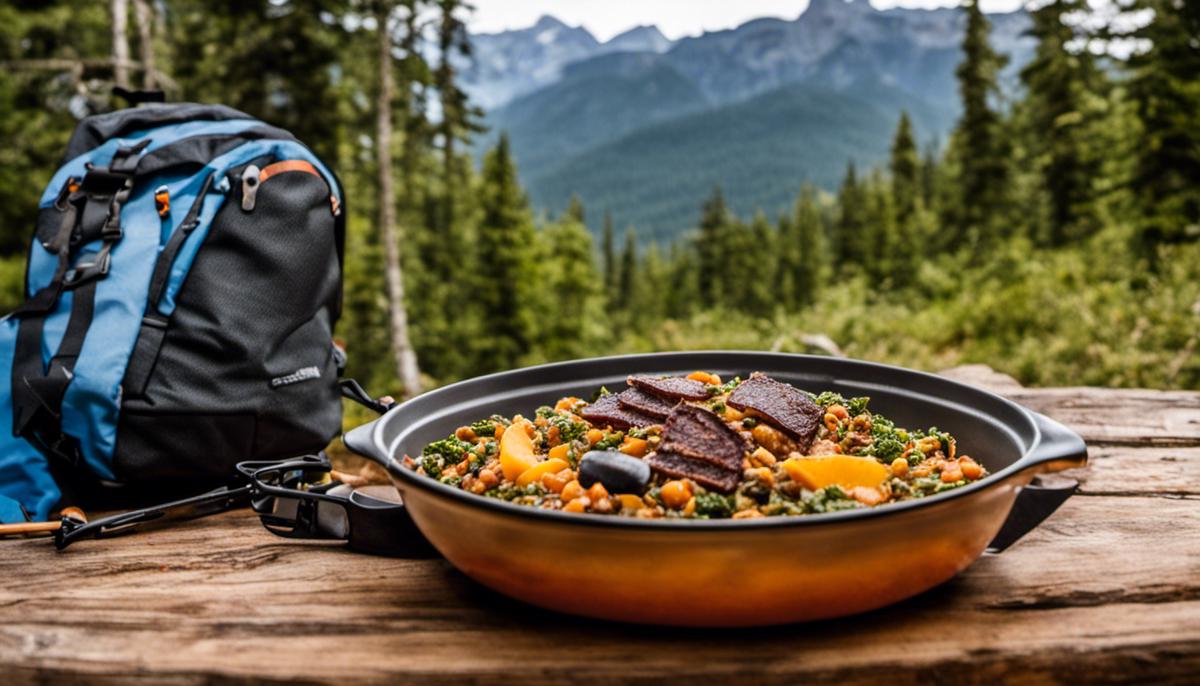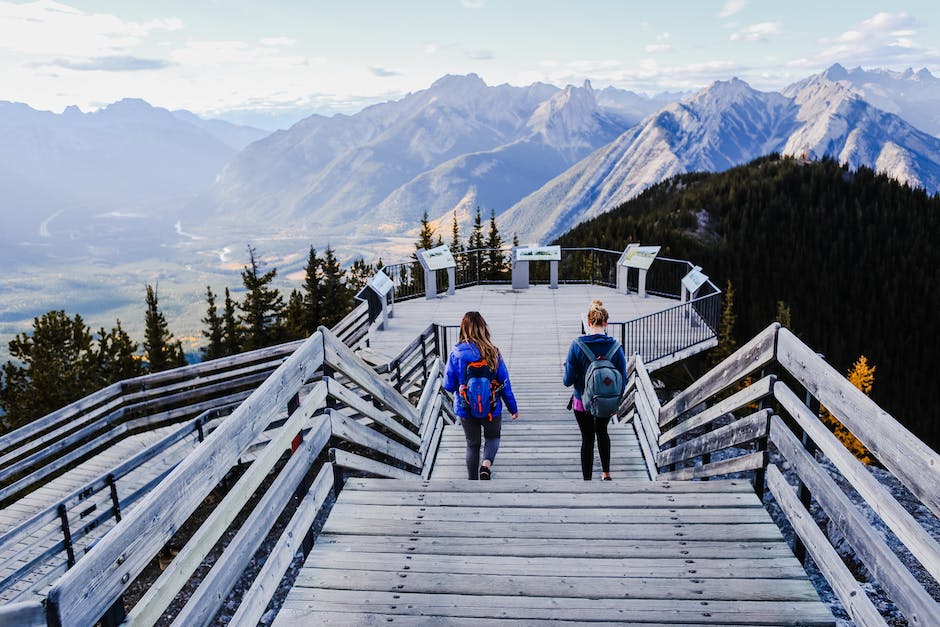Whether you’re a seasoned hiker or a novice eager to break in your boots, mastering the art of backpacking trip planning can make the difference between a delightful experience in the great outdoors and a taxing ordeal. There’s more to it than simply tossing a sleeping bag and some canned food into a bag; the key is thoughtful preparation and understanding the nuances of nature. Whether you’re covering critical elements such as gear selection and efficient packing, developing navigation skills, learning to read trail maps, or mastering trail etiquette, you can create satisfying, safe adventures in the wild. Additionally, the route selection process, awareness of critical food needs, and understanding safety and emergency protocols are not only essential but life-saving knowledge for every backpacker.
Understanding Backpacking Basics
Choosing Appropriate Backpacking Gear
When going on a backpacking trip, the right equipment determines the success and enjoyment of your journey. Backpacking gear should be chosen based on your experience level, trip length, the season, and the specific activity you are engaging in, such as hiking, camping, or mountaineering. It is essential to select a good quality backpack that can hold all of your gear comfortably and distribute weight uniformly. Also, consider a sleeping bag and tent that are lightweight, durable, and suitable for the expected weather conditions. Apparel should be moisture-wicking, quick-drying, and layered to adapt to changing temperatures throughout the day.
Efficient Packing for Backpacking
Packing efficiently for a backpacking trip involves striking a balance between carrying everything you need and keeping your load as light as possible. Pack your sleeping bag and clothes at the bottom of your pack to create a comfortable base. Heavier items such as your food supply, cookware, and tent should follow, placed closest to your back for stability and balance. Top segments are for light, frequently used items such as maps and rain gear.
Understanding Trail Etiquette
While backpacking, it’s important to respect the environment and other hikers by following trail etiquette. This includes staying on marked trails to preserve natural habitats, carrying out any trash you bring in, and keeping noise to a minimum to allow others to enjoy the serenity of nature. Right of way on trails generally goes to those going uphill or horses, so step aside when needed.
Interpreting Backpacking Maps
Being comfortable with reading and interpreting topographic maps is a crucial skill for any backpacker. These maps provide invaluable information about the terrain, including the steepness of slopes, type of vegetation, water sources, and trail distances. Understanding contour lines, colors, and symbols used in these maps can help plan your route and anticipate challenges such as high ascents or river crossings.
Learning Basic Navigation Skills
GPS and mobile apps can be a great help, but don’t rely solely on electronics for navigation as they can fail or run out of battery. Invest time in learning how to use a compass. Remember, the compass needle always points towards magnetic north, but you will need to adjust for ‘declination’ to get true north. Learn to identify prominent landmarks, the position of the sun, and the constellations for orientation during night. Aim to track your progress on your map regularly to catch any deviations early. Make sure you are familiar with the estimated travel time between significant points along your route.

Researching and Choosing Your Routes
Understanding Backpacking Routes
Exploring different hiking and backpacking routes is the first step towards planning a successful backpacking trip. All trails vary greatly in their difficulty due to variables such as length, elevation change, terrain and conditions. Some trails might be short but steep, while others may be longer but gradually ascend. It’s vital to research and study your intended paths before embarking on your adventure. Websites, guidebooks, and topographical maps are good sources of information for this purpose.
Assessing Terrain and Conditions
Knowing what sort of terrain to expect can greatly affect your preparation for the trip. Whether it’s rocky, sandy, forested, mountainous, or contains river crossings can determine the kind of gear you need to bring. Conditions in terms of weather also need to be considered. Do a weather forecast check for the span of your trip. If heavy rain or snow is expected, your trail may be impassable or dangerous, thus either a change of route or delay will be necessary.
Evaluating Difficulty Level
Understanding the difficulty level of a hiking route is crucial to ensuring that you are physically prepared and capable of completing the hike. Difficulty levels are often rated by length, elevation change, and technical skills required. A route’s difficulty can also be affected by factors such as temperature, altitude, and whether the trail is well marked or not. Be honest in assessing your own abilities to avoid dangerous situations.
Identifying Required Skills and Equipment
Some backpacking routes may require specific skills or equipment. For instance, routes with steep grades or rocky terrain may necessitate experience in navigating difficult trails, while backpacking in colder climates may require knowledge of how to avoid and deal with hypothermia. Necessary equipment could range from a good pair of hiking boots for rocky terrains, to a map and a compass for poorly marked trails.
Planning Based on Distance and Elevation
A critical consideration when planning a backpacking trip is the overall distance and elevation of your chosen route. This can determine how long your trip will be. If a trail is long or has a lot of elevation gain, it will be more challenging and time-consuming. Understanding the distance and elevation of a route can also help you decide how much food and water to carry, as well as gauge whether you’ll need to camp overnight. As a general rule, hikers cover about 2 to 3 miles per hour on average. Hence, planning how many hours or days you’ll be hiking can provide a sensible estimate for your trip duration.
By comprehensively studying different hiking and backpacking routes, you can ensure you are well-prepared for your trip and increase your chances of a safe and enjoyable journey. Remember, the key is to plan ahead, be aware of your capabilities, and always respect the power of nature.

Nutrition and Food Preparation
Understanding Food Needs for Backpacking Trips
Backpacking involves a lot of energy expenditure. Therefore, the food consumed during your trip should help to replenish your energy. High-energy foods can include items that are high in carbohydrates, protein, and healthy fats. These foods provide the long-lasting energy needed for strenuous hiking.
Light-weight food options are also essential for backpacking as they reduce the load you have to carry. Pre-packaged meals, freeze-dried foods, and dehydrated goods are great lightweight choices. These types of meals are not only compact and light to transport but also easy to prepare by just adding boiling water.
Preparing and Storing Meals for Backpacking
The way you prepare and store food for a backpacking trip can significantly affect the freshness and taste. It is crucial to pack meals that have a long shelf life to last up to five days or more in a backpack.
Prepare meals by vacuum sealing or repackaging them into zip-lock bags. Pre-cooking and dehydrating your food can also prolong its lifespan. This includes pasta sauces, chili, soups, and various other types of stews which can be dehydrated and rehydrated later to eat.
Storing meals in separate bags per day can also make it easier to keep track of your meals, and it also helps in rationing food more effectively.
Protecting Food from Wildlife
To avoid attracting wildlife, it’s important to store your food correctly. Use a bear canister to store food in bear-prone areas. This canister is designed to be difficult for bears to open.
Remember to cook and store your food a good distance from your camping area. This reduces the likelihood of bears or other wildlife being attracted to your sleeping area.
Moreover, avoid eating in the tent or storing food in it. The smell of food can attract animals, and it’s far safer to keep your eating areas separate from sleeping areas.
For additional protection, suspend your food, cooking gear, and toiletries high above the ground. Hanging food bags, often known as bear bags, from a tree branch will place it out of reach from smaller wildlife like raccoons and squirrels.
Considerations for Backpacking Foods
Ultimately, the food you pack should be something you will enjoy eating. Experiment with various recipes before setting out on your trip to find out what you prefer. It’s important to consider meal preparation time, ease of cooking, and how many ingredients are needed.
While planning your food, consider variety, to keep your diet interesting. Also, remember to account for sufficient hydration as well as water for cooking your meals. Including a handful of comfort foods or favorite snacks can help to lift your spirits after a hard day’s hike.

Safety and Emergency Preparedness
Gathering Knowledge on Potential Hazards
Before embarking on a backpacking trip, it is essential to make yourself thoroughly aware of the potential dangers. This includes understanding the impact of weather changes and the challenges posed by the terrain. Research the area’s climatic conditions in throughout the year and during the period of your visit. Study the topography of the region to understand the difficulty levels of various tracks.
Understanding Wildlife Risks
Familiarize yourself with the types of wildlife in the area you’ll be exploring. Some regions may be home to dangerous animals such as bears or mountain lions, while others could have poisonous snakes or insects. Learn how to avoid encounters or react if one occurs. Keep your food securely stored to avoid attracting wildlife to your camping site.
Health Risks and First Aid Knowledge
Get a thorough health check-up before your trip, especially if you have any chronic medical conditions. Bring along an adequate supply of medication if needed. Learn basic first aid procedures and carry a well-stocked first aid kit. Understanding how to treat common ailments and injuries, like sprains, cuts, and insect bites, may be critical to your survival.
Preparing for Emergencies
Unexpected emergencies can arise, be it getting lost, encountering aggressive wildlife, or weather-related events. Ensure to have a plan in place for such situations. Familiarize yourself with local emergency numbers, carry a fully charged mobile phone or a satellite phone for remote areas with poor network coverage.
Pack Essential Equipment
Always pack essential safety gear. A headlamp, compass, map, multi-tool, whistle, mirror for signaling, and a fire starter can be lifesavers in emergencies. Ensure you pack waterproof clothing and a lightweight, yet warm sleeping bag to brave the elements. Also, carry a portable water filter for safe hydration.
Check Weather Forecasts
Before setting off, always check current and forecasted weather conditions for your location. Sudden storms, heavy rains or snowfall can make certain paths unsafe or impassable. In extreme cases, bad weather can also lead to life-threatening situations.
Inform Someone About Your Plans
Before you depart, tell someone where you’re going and when you plan to return. Share your planned routes and schedule. If there is an unexplained delay, they can alert rescue services.
All these preparations may seem to be time-consuming but ensuring safety is integral to enjoy backpacking trips. Being prepared greatly reduces the chances of accidents and promotes a pleasure-filled adventure. Remember, your safety is in your hands.

As we journey through the wilderness of understanding backpacking trip planning, it is evident that every piece of knowledge is a stepping-stone towards a successful and memorable experience. The in-depth understanding of crucial elements such as proper equipment choice, nutrition, route planning, and safety measures all weave together to form a comprehensive backpacking plan. These facets of planning not only equip you with logistical help but also prepare you mentally for possible challenges and risks involved. Armed with this knowledge, you’ll be ready to tackle your next trip with confidence and a greater assurance of enjoying each moment spent in the natural wonder that awaits. Happy Trails!
Writio: Your AI content writer and ranking tracker – Delivering top-notch articles with relevant images, customized in any style, and automatically published to WordPress. This post was created by Writio.
